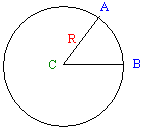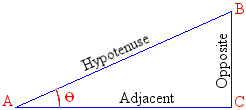In Lesson 2, we learned how to declare variables of integral, floating-point, and string types. We also saw how to initialize the variables. If you have a program with mixed types of variables, you may be interested in converting the value of one into another. Again, in Lesson 2, we saw how much memory the variable of each data type required in order to hold its value. Here is a summary of what we learned:
As you can see, a value held by a byte variable can fit in the memory reserved for an int variable, which can be carried by a long variable. Thanks to this, you can assign a byte value to an int variable, or an int variable to a long variable. Also, based on this, because the memory reserved for an int variable is larger than the one reserved for a double variable, you can assign a variable of the former to a variable of the latter. Here is an example: public class Exercise {
public static void main(String[] args) {
int iNumber = 2445;
double dNumber = iNumber;
System.out.println("Number = " + iNumber);
System.out.println("Number = " + dNumber);
}
}
This would produce: Number = 2445 Number = 2445.0 This characteristic is referred to as implicit conversion. Because of memory requirements, the direct reverse of implicit conversion is not possible. Since the memory reserved for a short variable is smaller than that of an int, you cannot assign the value of an int to a short variable. Consider the following program: public class Exercise {
public static void main(String[] args) {
int iNumber = 168;
short sNumber = iNumber;
System.out.println("Number = " + iNumber);
System.out.println("Number = " + sNumber);
}
}
This would produce the following error: C:\Exercise>javac Exercise.java
Exercise.java:4: possible loss of precision
found : int
required: short
short sNumber = iNumber;
^
1 error
Value casting consists of converting a value of one type into a value of another type. For example, you may have an integer value and you may want that value in an expression that expects a short number. Value casting is also referred to as explicit conversion. To cast a value or a variable, precede it with the desired data type in parentheses. Here is an example: public class Exercise {
public static void main(String[] args) {
int iNumber = 168;
short sNumber = (short)iNumber;
System.out.println("Number = " + iNumber);
System.out.println("Number = " + sNumber);
}
}
This would produce: Number = 168 Number = 168 When performing explicit conversion, you should pay close attention to the value that is being cast. If you want an integer value to be assigned to a short variable, the value must fit in 16 bits, which means it must be between -32768 and 32767. Any value beyond this range would produce an unpredictable result. Consider the following program: public class Exercise {
public static void main(String[] args) {
int iNumber = 680044;
short sNumber = (short)iNumber;
System.out.println("Number = " + iNumber);
System.out.println("Number = " + sNumber);
}
}
This would produce: Number = 680044 Number = 24684 Notice that the result is not reasonable.
If you have two numbers, you can find the minimum of both without writing your own code. To assist you with this, the Math class is equipped with a method named min. This method is overloaded in fours versions to handle integers and decimal numbers. The syntaxes are: static int min(int val1, int val2); static long min(long val1, long val2); static float min(float val1, float val2); static double min(double val1, double val2); Here is an example of calling the method: import java.lang.Math;
public class Exercise {
public static void main(String[] args) {
int number1 = 8025;
int number2 = 73;
System.out.println("The minimum of " + number1 + " and " +
number2 + " is " + Math.min(number1, number2));
}
}
This would produce: The minimum of 8025 and 73 is 73
As opposed to the minimum of two numbers, you may be interested in the higher of both. To help you find the maximum of two numbers, you can call the max() method of the Math class from the java.lang package. It is overloaded in four versions to handle natural and decimal numbers. The syntaxes of this method are: static int max(int val1, int val2); static long max(long val1, long val2); static float max(float val1, float val2); static double max(double val1, double val2); Here is an example of calling the method: import java.lang.Math;
public class Exercise {
public static void main(String[] args) {
int number1 = 8025;
int number2 = 73;
System.out.println("The minimum of " + number1 + " and " +
number2 + " is " + Math.max(number1, number2));
}
}
This would produce: The maximum of 8025 and 73 is 8025
The decimal numeric system counts from negative infinity to positive infinity. This means that numbers are usually negative or positive, depending on their position from 0, which is considered as neutral. In some operations, the number considered will need to be only positive even if it is provided in a negative format. The absolute value of a number x is x if the number is (already) positive. If the number is negative, its absolute value is its positive equivalent. For example, the absolute value of 12 is 12, while the absolute value of 12 is 12. To get the absolute value of a number, the Math class is equipped with a method named abs, which is overloaded in four versions. Their syntaxes are: public static int abs(int value); public static long abs(long value); public static float abs(float value); public static double abs(double value); This method takes the argument whose absolute value must be fond. Here is an example: import java.lang.Math;
public class Exercise {
public static void main(String[] args) {
int number = -6844;
System.out.println("Original Value = " + number);
System.out.println("Absolute Value = " + Math.abs(number));
}
}
This would produce: Original Value = -6844 Absolute Value = 6844 |
|
|||||||||||||||||||||||||||||||||||||||||||||




